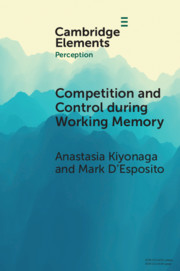Element contents
Competition and Control during Working Memory
Published online by Cambridge University Press: 13 October 2020
Summary
Information
- Type
- Element
- Information
- Series: Elements in PerceptionOnline ISBN: 9781108581073Publisher: Cambridge University PressPrint publication: 12 November 2020
References
Accessibility standard: Unknown
Why this information is here
This section outlines the accessibility features of this content - including support for screen readers, full keyboard navigation and high-contrast display options. This may not be relevant for you.Accessibility Information
- 11
- Cited by
